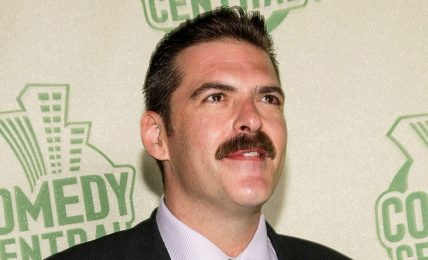© Joanne Imperio / The Atlantic
Late last month, during yet another inexplicable rebranding exercise, HBO’s Max streaming service changed the way it organizes film credits. Rather than separate out discrete production categories for users to peruse, Max’s credits lumped writers and directors together under an ominous header, dubbing them “creators.” The recategorization enraged writers, filmmakers, and the Directors Guild of America. Within a few hours, Max’s parent company, Warner Bros., apologized for the move, calling it “an oversight in the technical transition from HBO Max to Max.”
The change—made by a company with a market cap that is approaching $30 billion during a contentious writers’ strike—felt petty and vindictive to Hollywood professionals. Max restructuring its credits was interpreted as the studios saying the quiet part out loud: that the craft and professional expertise required to make art are unimportant, and that the distinctions and divisions of labor in the creative process are merely the obsessions of sensitive artisans. Put another way: In the algorithmic age of generative AI, there are no auteurs, just creators who make content. Tell ’em to smash those “Like” and “Subscribe” buttons, Marty Scorsese! As fleeting controversies go, this one rather perfectly encapsulates the anxieties of our immediate technological moment—one where media, entertainment, and art are all shaped, and ultimately subsumed, by the infinite scroll.
Union shops such as the Directors Guild have long fought for proper credits recognition, and creator touches a specific, raw nerve. It is imbued with the baggage of the internet and, specifically, a subset of workers whose work is frequently devalued by, exploited by, and subject to the whims of capricious technology platforms. Many creators work on volume, constantly churning out content to make money and stay relevant. The moniker itself, as WGA West President Meredith Stiehm made clear in a statement, is “diminishing.”
As Taylor Lorenz wrote for The Atlantic, creator was originally championed by YouTube in 2011 as a catchall. Tim Shey, who worked at YouTube during this time, told Lorenz that creators “could write, edit, produce, do community management, and were entrepreneurs.” The term, adopted in lieu of YouTube star, was meant to signify that internet fame was widely achievable but also distinct from traditional Hollywood talent. Since those early days, Silicon Valley has devoured Hollywood: Technology companies such as Netflix and Amazon have become full-fledged studios, injecting billions into the business of film and television while ushering in a ruthless, data-driven, algorithmic approach to what gets green-lighted and how the rest of us watch it all.
“To call somebody a content creator flattens all the jobs into one category of ‘you make some crap,’” Josh Gondelman, a WGA member who has worked on Last Week Tonight With John Oliver and Desus & Mero, told me recently. “It’s not that it simply doesn’t show respect for multiplicity of skills or expertise; it’s that it takes money off the table. You used to get paid for each job you did. Now it’s one.” This is, to be clear, not a niche concern of well-paid Hollywood types but a facet of digital life in a time of automation.
The flattening that Gondelman describes is essential to understanding why algorithmic optimization and generative AI elicit deep fears from people in creative industries. Tech platforms marketed the creator economy as a kind of entrepreneurial liberation, but on the other side of this shift is the loss of safety nets such as unions, benefits, and other labor protections, as well as a concentration of wealth in the top 1 percent of influential viral personalities. Often implicit in the creator arrangement is the imperative to churn out a high volume of content. AI stands to make all of this worse.
[Read: The influencer economy is having an existential crisis]
Platforms need scale. The rebranded Max platform, for example, offers a mind-bending, virtually inexhaustible 35,000 hours of programming—that is, content. That’s another technology term that flattens distinctions—between mindless entertainment and meditative art, between instantly generated synthetic text and meticulously written sentences, between advertorial and editorial. Content rounds up any media that can pass in front of somebody’s eyes and drags it all down to the lowest common denominator: something that will engage a user for a period of time. And no technological tool is as exquisitely built and made to serve internet-level scale as generative AI. The large language models of our moment, such as GPT-4, are trained on dizzying, inhuman amounts of information, and the tools are designed to create endless quantities of synthetic filler that is immediately accessible for consumption. Quality is less relevant than quantity.
If you’re looking, you can already see AI creeping across the entertainment industry. In gaming, this looks like on-the-fly generated dialogue, with non-player characters replacing scripts and making open-world games almost infinitely playable. In podcasting, it might mean companies that can create Joe Rogan–style long-form interviews between any two people in human history. Missing Succession after the series finale? Simply conjure your own feature film with all the characters, as the venture capitalist Jason Calacanis did recently. “The perfect setup for a movie … there is no way this is over,” he tweeted shortly after the final episode aired.
Calcanis’s incredulity at the show’s finale is a useful example of what I’ll call Scale Brain: the result of a worldview that looks upon restraint with confusion and sees self-imposed limitations as weakness. This mindset doesn’t care about craft or going out on top—it sees attention and even adoration as resources to mine until they are depleted. There has to be a movie in the works, because eyeballs and money are still on the table. There is content left to make!
It seems telling, if a little on the nose, that those with Scale Brain are currently using generative-AI tools to expand the borders of classic paintings and photographs such as the Mona Lisa and the cover of The Beatles’ Abbey Road. On the one hand, this is little more than a fun computer parlor trick; on the other hand, it seems indicative of a mindset that cannot accept finality or limitations—which is to say that it cannot accept art itself. The Mona Lisa subsumed by the infinite scroll isn’t art; it’s algorithmic noise generated by a computational educated guess. Although it may be exciting from a purely technological standpoint, I find it a depressing, nihilistic refusal of the limits that make art interesting and human.
This is less about the end of art than the end of endings, brought to you by efficient production without limits. There is already a cultural obsession with lore and fandoms and the furthering of narratives via fan fiction and remix culture. Now the entertainment industry has responded in kind with a fixation on developing “intellectual property”—the narrative as the infinite scroll. One way to conceive of Scale Brain and generative-AI evangelism is to see a group of people enthusiastic about turning all facets of creative life into intellectual property, where everything can and should have an expanded cinematic universe, world without end.
Arguments about art and limitation and craft versus scale are prone to sounding overly precious: Art and creative work are businesses, after all. But it’s worth considering what is lost in a world led by people and technologies refusing to acknowledge human limits in favor of relentless, endlessly monetizable scale.
Perhaps the most interesting line in Warner Bros.’ apology statement was that the inclusion of the term creator was “an oversight in the technical transition”—a minor bug in the code, to be fixed with a quick update. In some ways, this is the entire story: the friction that comes from applying an engineering framework to the human work of artistic creation. It’s also a concise way to sum up working in a world of limitless content, where it’s easy to feel like we’re all on the verge of becoming an oversight in the technical transition.


